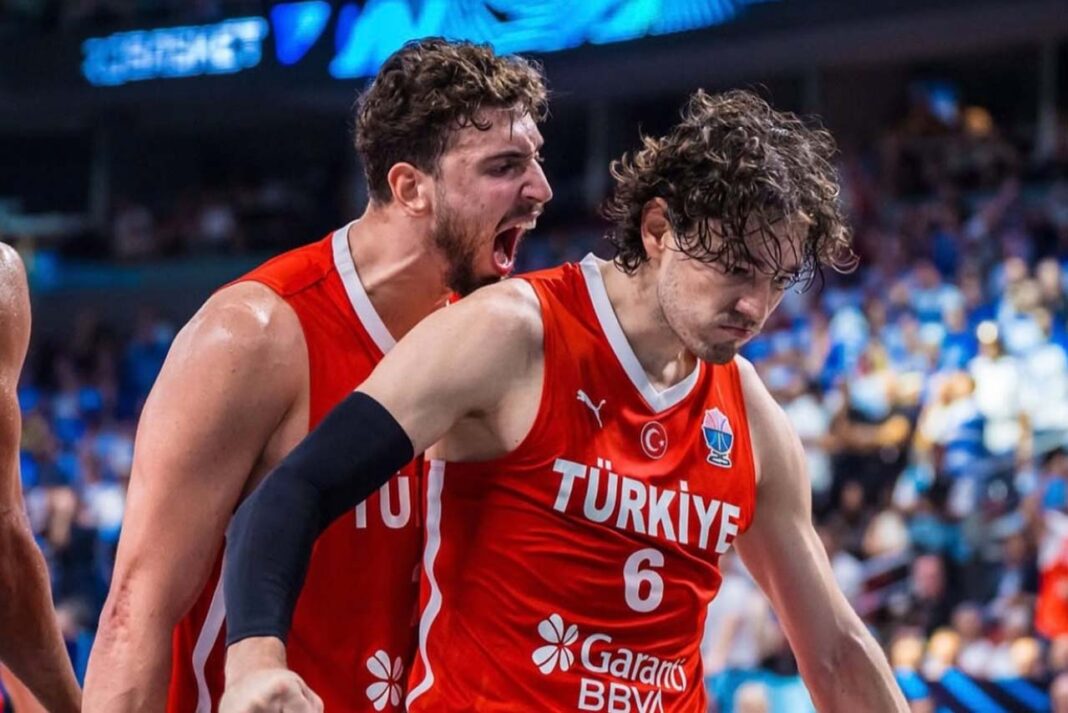The clock shows 21:40. The score on the court is 88-83, and we are at the most critical
moment of the final match. The opposing team takes the lead with 18 seconds left in the
game, and the seconds tick away: 17, 16, 15…. Those final 18 seconds, which might mean
nothing to us in daily life, transform at that moment into a single breath felt across every
corner of Turkey.
Whether watching on giant screens set up in public squares, from our living rooms, or on our
phones, we are all glued to the screen, sharing the same emotions. Perhaps one successful shot
will rekindle the hope of the entire country, or a lost ball will plunge everyone into anxiety.
All of these feelings reflect the common identity of 85 million people. At that moment, all
barriers between these individuals—who previously supported different teams, held varying
political views, and belonged to vastly different cultures—are lifted, replaced by the “breath
of a nation,” leaving only “us”.
This is precisely where sport psychology intervenes, examining the impact of national
matches on “collective identity”. How can a single basketball game so intensely and, even if
temporarily, unite a nation under a common denominator of belonging?
The psychological foundation for national matches uniting such broad masses within a single
emotional framework is explained by Social Identity Theory (SIT). A central tenet of this
theory is that behavior is structured by the group/team memberships that individuals
internalize as part of their self-concept. Social identity is the part of an individual’s self-
concept that derives from their knowledge of, value judgments about, and emotional
significance attached to their membership in a group (Tajfel and Turner, 1979). An individual
integrates with a group, establishes an emotional connection with it, and perceives themselves
as having similar or identical qualities to other group members (Underwood et al., 2001).
According to SIT, individuals possess both personal identity (hobbies, talents) and social
identity (social classifications such as race, gender, and political affiliation) (Fink et al.,
2009). When individuals categorize themselves as members of a group, they refer to
themselves as “we” rather than “I”. This phenomenon prompts them to differentiate their
ingroup from comparison groups in a positive context (Stevens et al., 2017).
In this context, the social identity that individuals develop with their teams (defined by
Murray and Sabiston, 2022, as the level of attachment and emotional belonging to a group)
plays a critical role in determining their levels of enjoyment of and commitment to the
sport (Martin et al., 2018; Stevens et al., 2017). As an individual’s level of integration with
the group increases, so does their motivation to learn and conform to the norms, values, and
ideals that define group membership (Martin et al., 2018).
This motivating source, social identity, is examined across three interconnected core
dimensions (Bruner and Benson, 2018; Turkay et al., 2018): Ingroup Ties (sense of
belonging and similarity), Cognitive Centrality (importance given to group membership),
Ingroup Affect (degree of positive feelings derived from the group). These dimensions
reflect the complex nature of how individuals become attached to their groups or teams
(Bruner and Benson, 2018; Cameron, 2004).
In basketball, where fandom is strong and appeals to various groups, the sense of belonging
and “we” must be considered in terms of collective identities, fanaticism, and nationalism.
Generally, in Turkey, as in the global context, basketball is one of the widely adopted sports
among the populace. “Fandom,” a customary reflection of sports activities in society,
encompasses collective identities built on emotional attachment, corresponding to a wide
spectrum of emotional states (Mert Kerem Zelyurt, 2023).
Kozanoğlu (1996) suggests that not supporting a sports team can isolate an individual from
important social interaction platforms such as schools, cafe environments, friend groups, and
media sharing. This view underscores basketball’s key role in fostering social integration
and a sense of belonging. This mass popularity is also empirically observed through the
distribution of licensed athletes. Additionally, according to Ergen’s (2004) analysis, the
dynamic structure and the resultant “excitement” of sports like basketball and football, which
involve physical struggle and the potential for fouls, are determining factors in attracting mass
interest.
According to Daniel Wann of Murray State University, sports fandom provides individuals
with a psychologically healthy activity because it reinforces the sense of belonging by
bringing like-minded people together. Studies indicate that individuals who identify as sports
fans have higher self-esteem, experience less loneliness, and report higher life satisfaction
compared to those uninterested in sports.
However, this intense attachment comes with an emotional cost. For fans who see
themselves as part of the game, a team’s defeat can be experienced as a personal loss. While
fans feel happiness when their team wins, they may experience the opposite in the event of a
loss, suffering negative emotions such as anger, sadness, despair, and depression (Forsyth,
2010). Nevertheless, thanks to this strong attachment, fans continue to accept defeat and
remain loyal to their team. Indeed, as Galeano (2008) emphasizes, in critical moments, the
collective identity is brought to the forefront, with the phrase “We are playing” often
replacing “My team is playing today”.
This collective belonging also assumes a key role when national sports are utilized to
mobilize nationalistic sentiments. Symbols used in sport (such as flags and anthems) are
effective tools for arousing national feelings. Success in specific sports (e.g., athletics in
Kenya, football in Brazil) symbolically contributes to the perceived greatness of the
respective nation (Jarvie, 2006). There is extensive evidence that sport serves the ideology of
nationalism, making it a unique vehicle for instilling national sentiments. This situation
elevates athletes, who identify with nations and states, to the position of principal
representatives of “imagined communities” (Mert Kerem Zelyurt, 2023).
In summary, national matches are among the most striking social activities that actualize
these positive functions—psychologically empowering individuals and socializing them
through group inclusion—by constructing collective identity across societal diversity.


